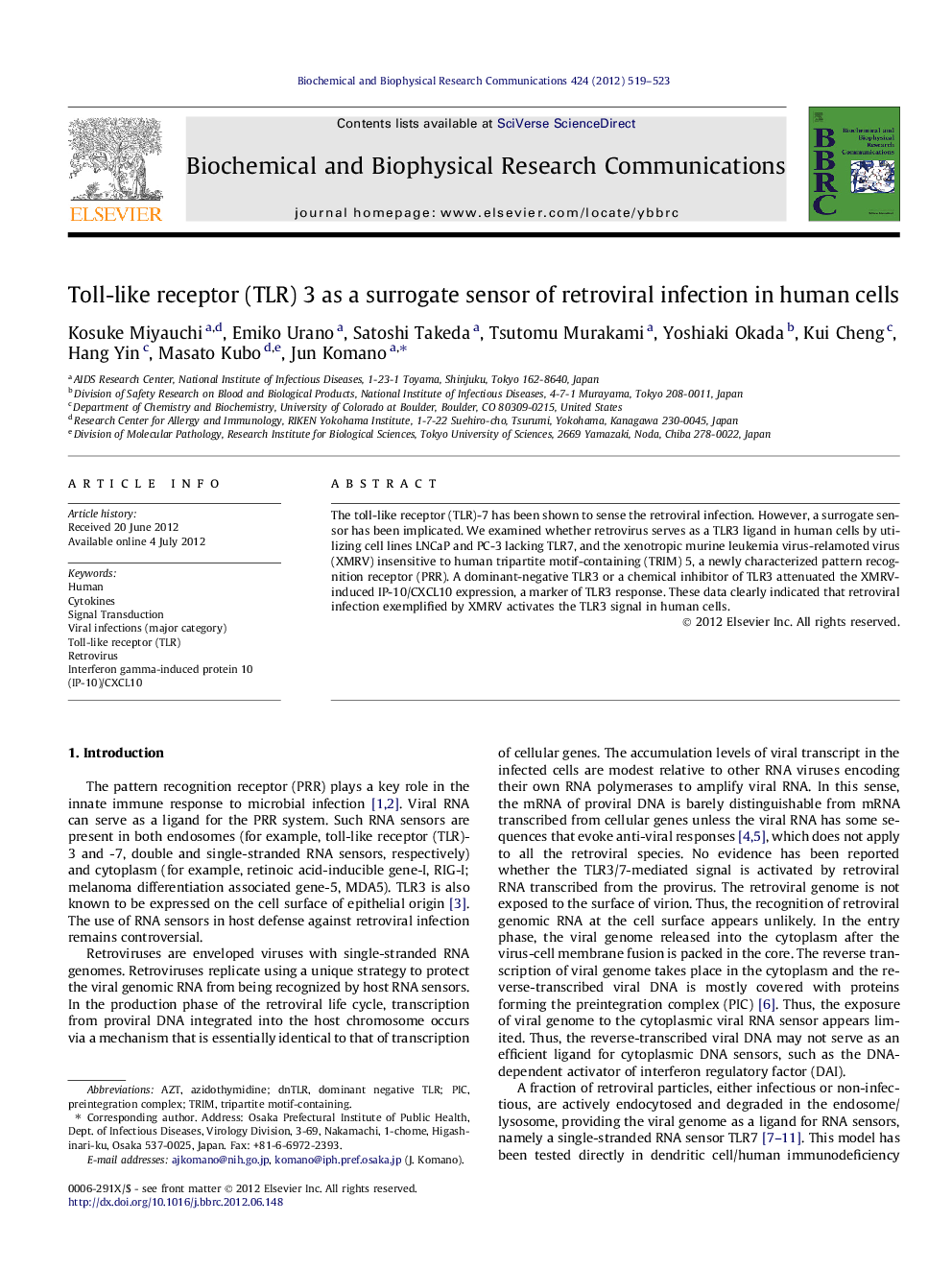| Article ID | Journal | Published Year | Pages | File Type |
|---|---|---|---|---|
| 1929331 | Biochemical and Biophysical Research Communications | 2012 | 5 Pages |
The toll-like receptor (TLR)-7 has been shown to sense the retroviral infection. However, a surrogate sensor has been implicated. We examined whether retrovirus serves as a TLR3 ligand in human cells by utilizing cell lines LNCaP and PC-3 lacking TLR7, and the xenotropic murine leukemia virus-relamoted virus (XMRV) insensitive to human tripartite motif-containing (TRIM) 5, a newly characterized pattern recognition receptor (PRR). A dominant-negative TLR3 or a chemical inhibitor of TLR3 attenuated the XMRV-induced IP-10/CXCL10 expression, a marker of TLR3 response. These data clearly indicated that retroviral infection exemplified by XMRV activates the TLR3 signal in human cells.
► TLR3 was shown to serve as a surrogate sensor of retrovirus in human cells. ► TLR3’s anti-retroviral functions were assessed in a system unaffected TRIM5. ► TLR3’s recognition of XMRV was investigated by genetic and chemical approaches.
